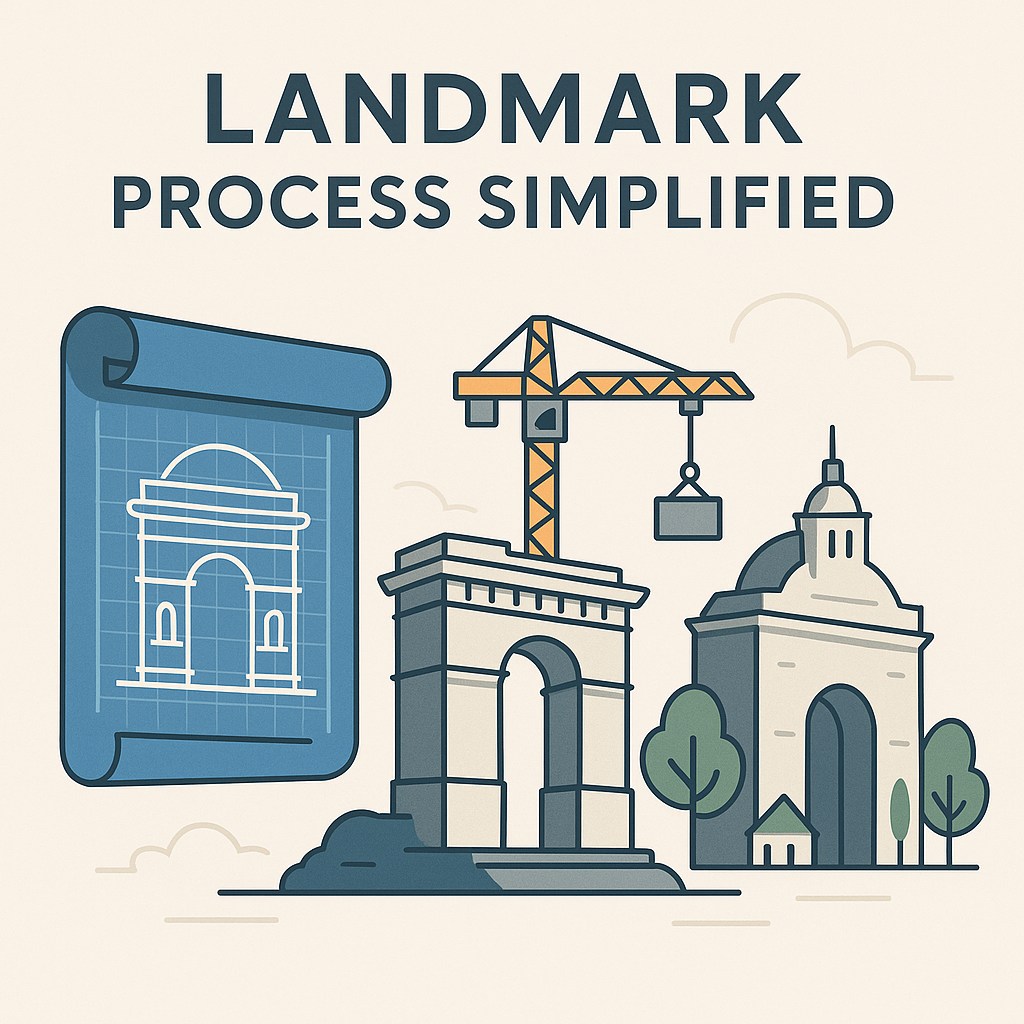Navigating the Landmarks Preservation Commission (LPC) process in New York City can be overwhelming, especially for commercial developers and property owners managing buildings with historic designation. Any property that is landmarked or located within a historic district is subject to additional layers of review designed to preserve the character and integrity of NYC’s architectural heritage.
While the process may seem complex, understanding the steps and working with the right professionals can make it far more manageable. This guide outlines how to successfully obtain approvals for work on landmarked properties, so your project stays compliant and on schedule.
What Is a Landmark in NYC—and Why Does It Matter?
Definition & Scope:
In New York City, a landmark is a building, site, or district officially designated as historically, culturally, or architecturally significant. With more than 35,000 landmarked properties across 139 historic districts, landmark status is more common than many property owners realize.
The Role of the LPC:
The Landmarks Preservation Commission (LPC) is the city agency responsible for protecting these properties. Any work involving construction or alterations on designated landmarks must be reviewed and approved by the LPC—in addition to securing permits from the Department of Buildings (DOB).
Why It Matters for Owners and Developers:
Landmark status introduces additional regulatory steps to your project. Failing to comply can result in delays, fines, or legal issues. However, landmark status also elevates your property’s prestige and ensures its architectural legacy is maintained. Understanding the process from the beginning is critical to avoid costly setbacks.
How Landmark Status Affects Your Project
An Extra Approval Layer:
Standard DOB permits alone won’t suffice. If your building is landmarked or located within a historic district, LPC approval is required before DOB will issue a construction permit—especially for exterior work.
How to Check Status:
You can determine whether a property is landmarked by checking the NYC Department of Buildings’ Building Information System or using the LPC’s interactive maps online.
Planning Considerations:
Landmark status influences everything from your timeline to your design. LPC approval often hinges on preserving the building’s visible features—like facades, windows, or architectural details. Even interior renovations may trigger LPC involvement if they affect the exterior or structural elements. Knowing this upfront helps set realistic expectations and budgets.
Step-by-Step: How to Navigate the Landmark Approval Process
Step 1 – Engage Professionals
Start by hiring an architect or expeditor with experience in landmark projects. They’ll review the building’s designation report, confirm applicable rules, and design plans that meet LPC standards.
Step 2 – Prepare and Submit the Application
Your team will prepare a full application package, including photos, drawings, and a detailed scope of work. This is then submitted to LPC for review. Minor changes may qualify for staff-level review; major alterations will require a Commission hearing.
Step 3 – LPC Review
LPC staff assess whether your project qualifies for expedited approval or needs a full hearing. Significant changes—such as additions or façade alterations—go through a public hearing process and require a Commission vote.
Step 4 – Obtain LPC Permit
Once approved, the LPC issues a permit (or Certificate), which is required alongside your DOB permit. You cannot proceed without both in hand.
Step 5 – File with DOB
Submit the LPC permit and approved plans to DOB to obtain your standard construction permit. The project must still comply with city building codes and zoning regulations.
Step 6 – Final Inspections and Sign-Offs
After work is complete, LPC may inspect the property to confirm the approved scope was followed. Final DOB inspections will then clear your project for a Certificate of Occupancy or Letter of Completion.
Understanding LPC Permit Types
Staff-Level vs. Full Commission Review
LPC approvals vary depending on the scope and visibility of the proposed work.
Certificate of No Effect (CNE):
Issued when proposed work does not affect protected features but requires a DOB permit (e.g., interior renovation). Often approved within 1–2 weeks.
Permit for Minor Work (PMW):
Required for smaller exterior work—such as in-kind window replacements—even if DOB doesn’t require a permit.
Certificate of Appropriateness (C of A):
Necessary for major changes like new additions or façade alterations. This type of permit requires a public hearing and may take 2–3 months to secure.
Timeline Considerations:
Plan ahead. While staff-level permits may be issued in under two weeks, a full Certificate of Appropriateness can take several months depending on scheduling and community involvement.
Tips for a Smooth LPC Approval
Do Your Homework
Review your building’s designation report and historic district guidelines. These documents outline what changes LPC will consider appropriate.
Respect the Historic Character
Whenever possible, restore rather than replace. Use historically accurate materials and methods. LPC favors reversible work that does not permanently alter original features.
Engage Stakeholders Early
For large projects, it’s wise to involve community boards or preservation groups early in the process. Their feedback can prevent opposition during hearings.
Work With Experts
Experienced architects familiar with LPC processes know how to craft compliant proposals and avoid common mistakes. They can also coordinate LPC and DOB filings to reduce delays.
Never Start Without Permits
Starting work without both LPC and DOB permits can result in stop-work orders, fines, and legal action. Following the proper process from the beginning saves time, money, and stress.
Final Thoughts
Navigating NYC’s landmark process doesn’t have to be overwhelming, especially with the right team on your side. If you’re planning construction or renovation work on a landmarked property, our architecture experts are here to help. We’ll guide you through every step of the LPC process, ensuring your project honors the building’s history while moving efficiently toward approval.



